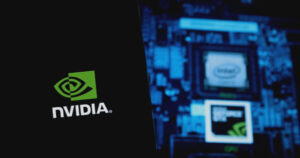TSMC and NVIDIA Revolutionize Semiconductor Manufacturing with cuLitho and AI

TSMC, a leading semiconductor manufacturer, has announced a groundbreaking partnership with NVIDIA to leverage the cuLitho computational lithography platform. This collaboration aims to revolutionize the production of advanced semiconductor chips, as detailed in the NVIDIA Blog.
The Significance of Computational Lithography
Computational lithography plays a critical role in transferring circuit designs onto silicon, involving intricate computations that encompass electromagnetic physics, photochemistry, and distributed computing. Traditionally, this step has been a bottleneck in the manufacturing process due to its compute-intensive nature, necessitating extensive data centers and consuming significant CPU hours annually.
Advancements through NVIDIA’s cuLitho Platform
NVIDIA’s cuLitho platform introduces accelerated computing to streamline this process, with 350 NVIDIA H100 Tensor Core GPU-based systems capable of replacing 40,000 CPU systems. This innovation significantly reduces production time, costs, and resource consumption, empowering TSMC to push the boundaries of semiconductor manufacturing capabilities.
Dr. C.C. Wei, CEO of TSMC, commended the integration of GPU-accelerated computing as a game-changer in performance, enhancing throughput, and minimizing cycle time and power requirements. This advancement was highlighted at the GTC conference earlier this year.
Enhancements with Generative AI
In addition to accelerated computing, NVIDIA has integrated generative AI into the cuLitho platform, boosting the optical proximity correction process’s speed by 2x. Generative AI facilitates the creation of near-perfect inverse masks, considering light diffraction and expediting the process compared to traditional methods.
The fusion of accelerated computing and AI is reshaping semiconductor lithography, an area that has witnessed few rapid advancements in the past three decades. These technologies enable more precise simulations and realizations of complex mathematical techniques, previously constrained by resource limitations.
Implications for the Semiconductor Industry
The substantial acceleration in computational lithography paves the way for quicker mask development in the fabrication process, reducing the overall cycle time for new technology nodes. With cuLitho, once-challenging techniques like inverse lithography become feasible, heralding the next era of potent semiconductors.
This collaborative effort between TSMC and NVIDIA signifies a pivotal moment in semiconductor manufacturing, underscoring the power of merging cutting-edge computing with AI to propel technological progress.
Image source: Shutterstock

